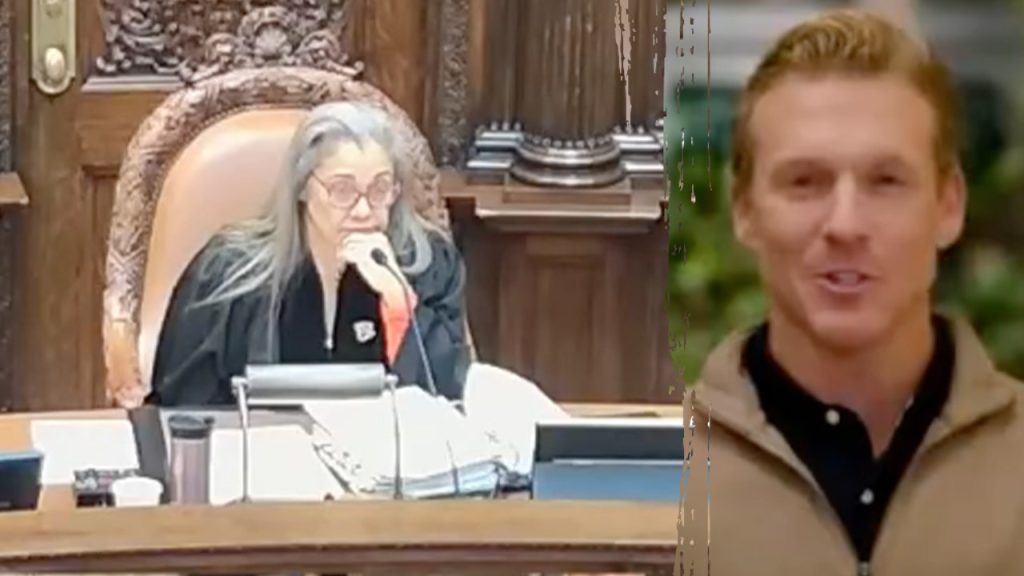In a remarkable turn of events in a New York courtroom, a plaintiff’s use of an artificial intelligence-generated avatar as his legal representative has raised serious questions about the integration of AI technology in legal proceedings. On March 26, during a case before the New York State Supreme Court Appellate Division, Jerome Dewald relied on an AI-created video to argue his employment dispute claims. As the judges engaged with the obviously synthetic lawyer, they expressed disapproval of Dewald’s unconventional approach, underscoring the ongoing debate surrounding the legality and ethics of using AI in court.
| Article Subheadings |
|---|
| 1) The Courtroom Incident: An AI Lawyer’s Debut |
| 2) Judges’ Reaction: Disapproval and Disbelief |
| 3) The Fallout: Apologies and Explanations |
| 4) Broader Implications: AI’s Role in Legal Proceedings |
| 5) Future of AI in the Legal System: Challenges Ahead |
The Courtroom Incident: An AI Lawyer’s Debut
On March 26, Jerome Dewald made a notable appearance before the New York State Supreme Court Appellate Division, attempting to argue his case with the assistance of an artificial intelligence-generated avatar. This case stemmed from an employment dispute where Dewald, representing himself, sought to use innovative technology to make his submission more engaging. During the court proceedings, Justice Sallie Manzanet-Daniels initiated a video presentation by Dewald, but upon seeing the AI-generated figure on screen, the judges were taken aback. They quickly identified that the attorney depicted was not a realistic representation, raising concerns about the authenticity of the argument being presented.
Judges’ Reaction: Disapproval and Disbelief
As the video played, the judges expressed their astonishment and skepticism regarding the legitimacy of the AI-generated lawyer. Justice Manzanet-Daniels interrupted the proceedings to question Dewald directly, confirming, “Is that counsel for the case?” The disapproval manifested further when the judge remarked, “It would have been nice to know that when you made your application.” This comment conveyed the seriousness with which the judiciary viewed the use of AI technology in the courtroom, especially when it was not disclosed prior to the proceedings. The reaction emphasized the potential ramifications of using such technology in sensitive legal contexts.
The Fallout: Apologies and Explanations
Following the unexpected incident, Dewald faced significant backlash from the judges. He later submitted an apology letter explaining that he had no legal representation and did not intend to mislead the court. Despite his intentions, the episode served to undermine the credibility of his claims and highlighted the potential pitfalls of utilizing AI in legal matters. Dewald’s reliance on an avatar instead of a qualified attorney raised questions about the expectations of representation in court and the boundaries of technology in the judicial system. “The court was really upset about it,” Dewald reflected, indicating an awareness of the severity of the misstep.
Broader Implications: AI’s Role in Legal Proceedings
This incident is not an isolated event but rather part of a growing concern regarding the introduction of AI into the legal field. Legal professionals are increasingly wary of the reliability of AI tools, evidenced by previous cases where lawyers have faced sanctions for relying on AI-generated content that led to legal missteps. For instance, two attorneys were fined for using ChatGPT, a language model, in a manner that resulted in the citation of fictitious cases in court documents. These precedents raise fundamental questions about the validity of AI as a helper in legal research and courtroom arguments.
Future of AI in the Legal System: Challenges Ahead
As the integration of artificial intelligence into various sectors accelerates, the legal field must confront significant challenges surrounding the use of AI. Questions persist about accountability when AI tools generate erroneous or misleading information. Additionally, the ethical implications of AI representing individuals in legal settings come into play, raising concerns about the justice system’s integrity and the potential for bias within AI algorithms. Legal authorities and lawmakers must navigate these uncharted waters to establish guidelines and ethical frameworks that protect both clients and the legal system from the adverse effects of AI misuse.
| No. | Key Points |
|---|---|
| 1 | Jerome Dewald used an AI-generated avatar in a New York court, leading to judges’ disbelief. |
| 2 | Judges expressed serious disapproval and concern over the authenticity of the representation. |
| 3 | Dewald issued an apology, explaining his lack of legal representation and intentions. |
| 4 | The event underscored ongoing issues with AI’s reliability in legal settings. |
| 5 | The future of AI in court raises questions about accountability, ethics, and systemic bias. |
Summary
In conclusion, the use of an AI-generated avatar by Jerome Dewald in a New York courtroom exemplifies the complexities and controversies surrounding AI’s role in the legal landscape. The judges’ robust response to the use of such technology highlights the need for clear guidelines and ethical standards as the legal system and technology continue to evolve. As AI becomes more integrated into everyday life, the implications for the judicial system will require careful consideration from legal professionals and policymakers alike.
Frequently Asked Questions
Question: What happened during Jerome Dewald’s court appearance?
Jerome Dewald used an artificial intelligence-generated avatar to represent him in a New York court, leading to confusion and disapproval from the judges.
Question: How did the judges react to the AI-generated lawyer?
Judges expressed disbelief and condemnation, questioning the integrity of using an AI-generated figure to present legal arguments.
Question: What are the broader implications of using AI in legal contexts?
The incident raises concerns about accountability, the reliability of AI-generated information, and the ethical ramifications for the justice system.


